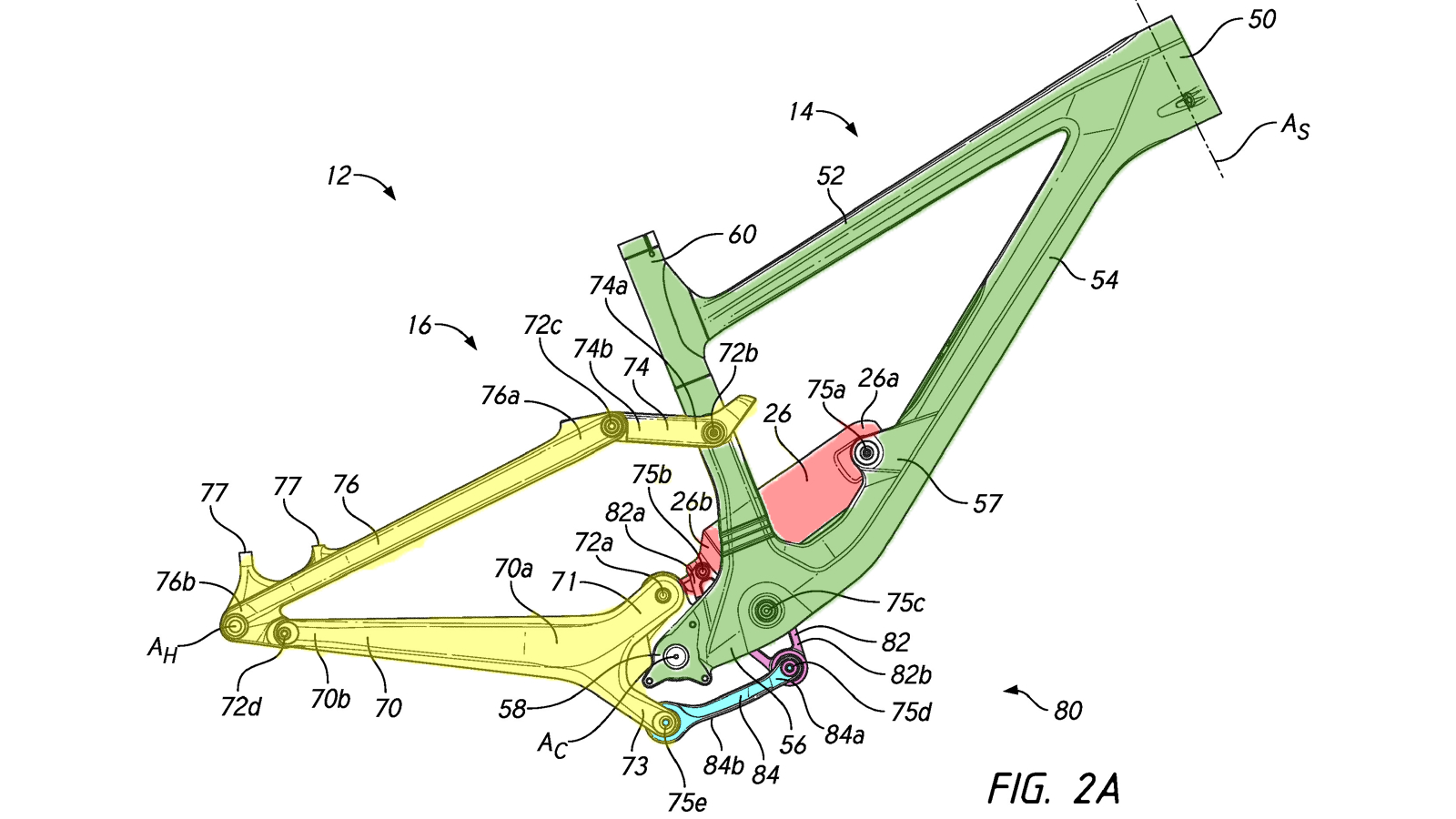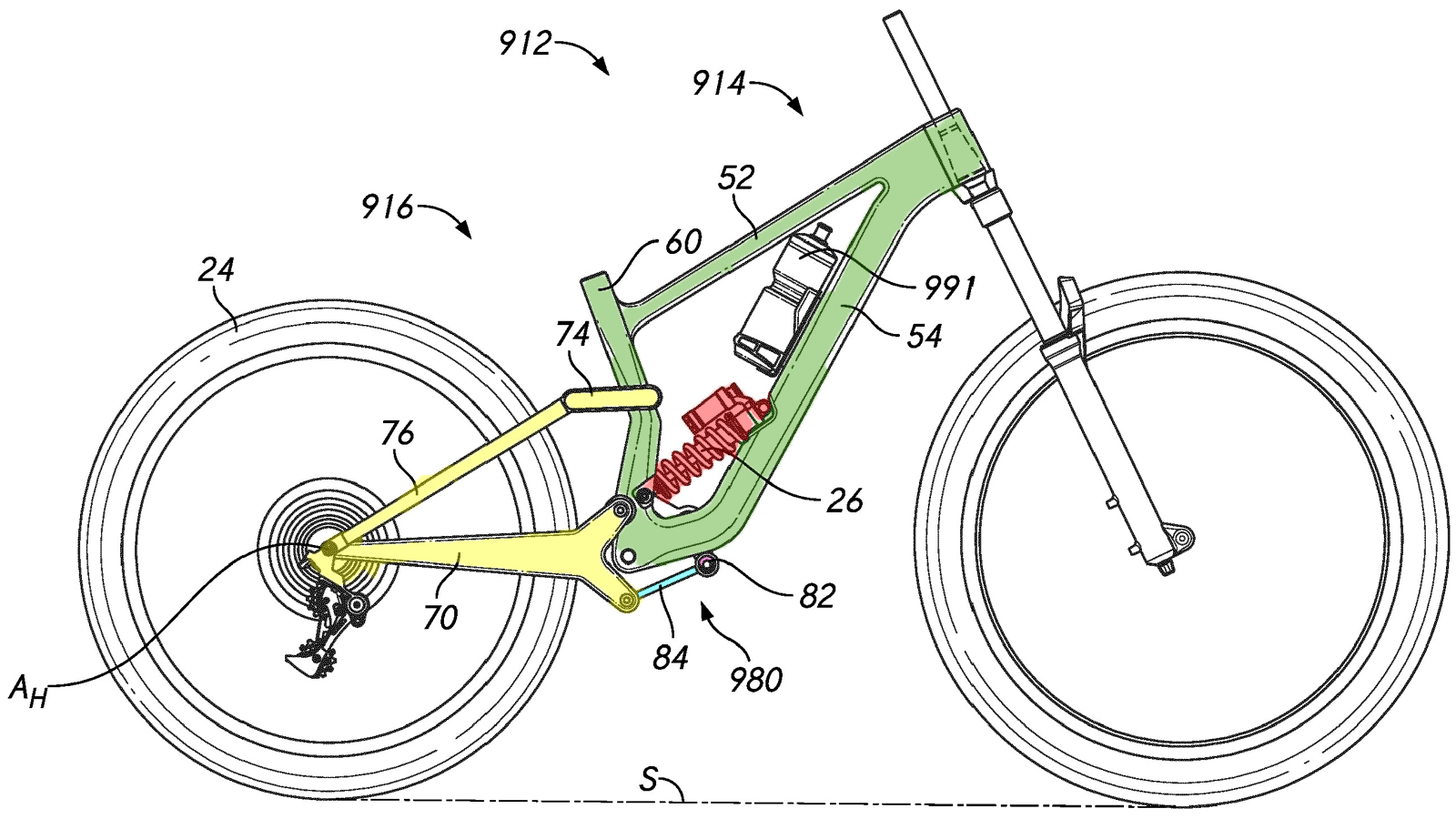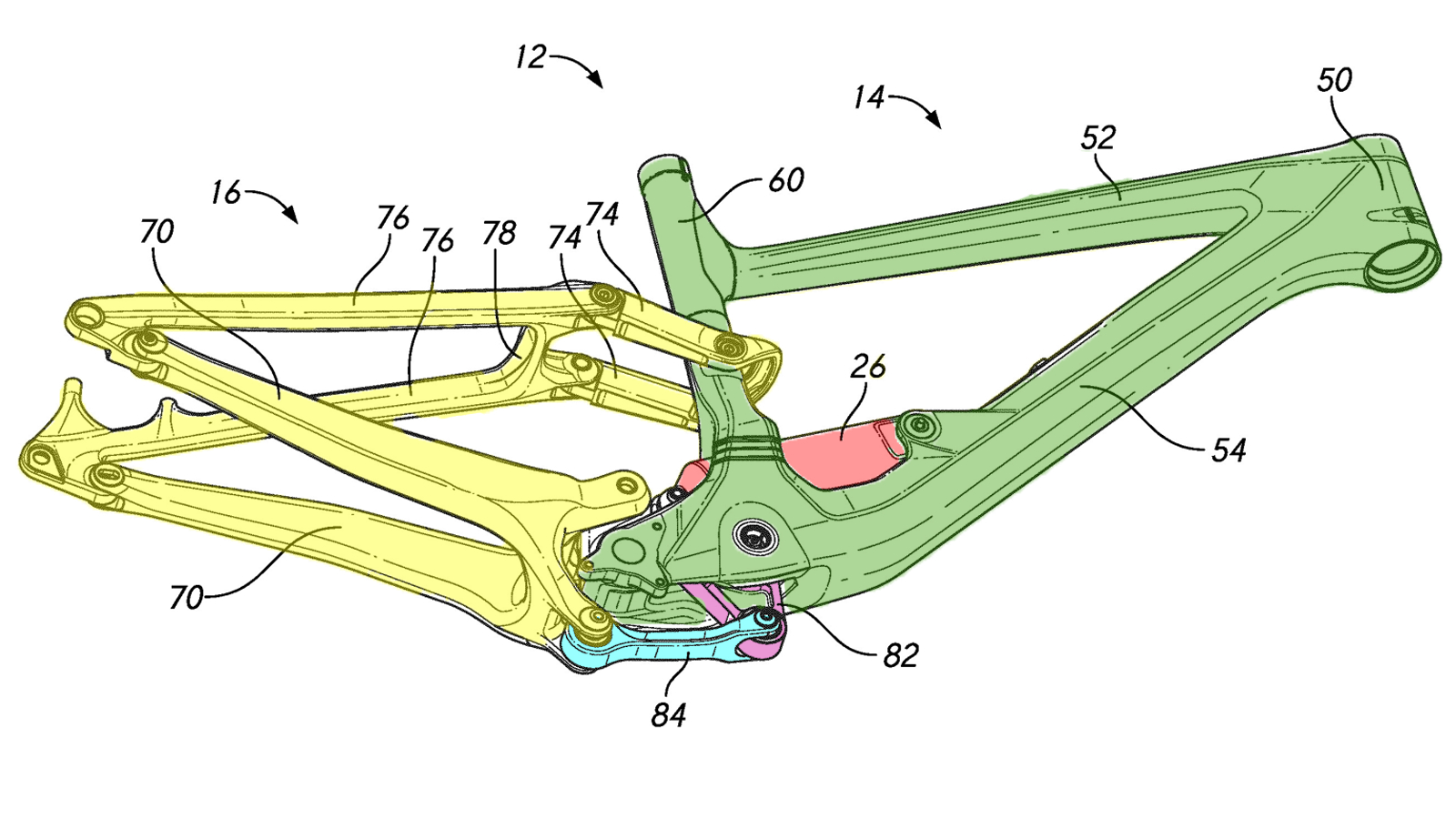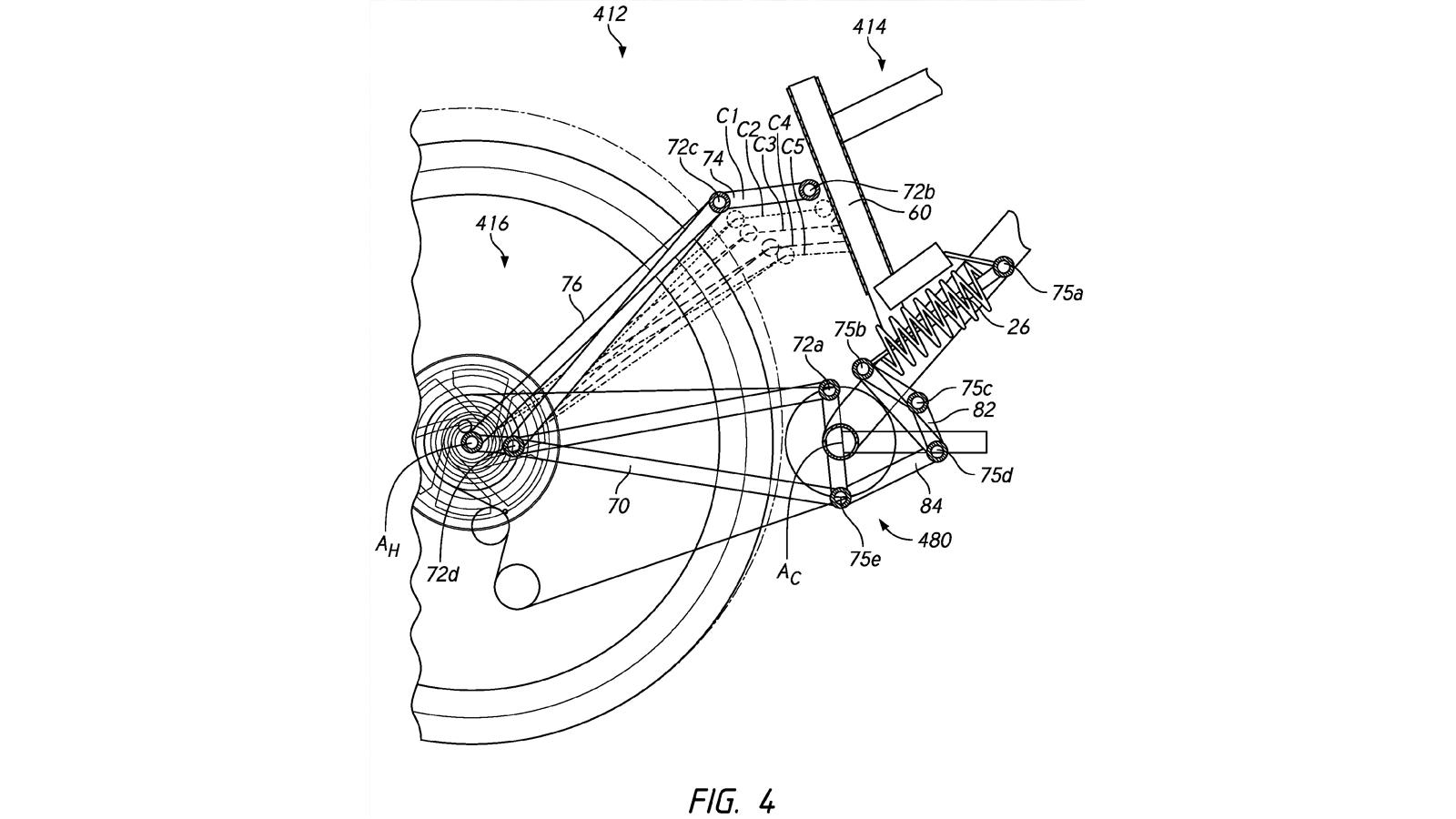Patent shows potential new Specialized Enduro bike featuring an ultra adjustable UBB suspension system
A recently published Specialized patent appears to show a brand-new UBB suspension mountain bike with 172mm of travel

Specialized has spent most of the year teasing downhill fans with their secret prototype downhill bike which spent most of the season with its bottom bracket area hidden behind a shroud. The cover was finally pulled away revealing a new suspension system Specialized called Under Bottom Bracket (UBB) suspension system.
Loic Bruni cleared up the Downhill World Cup overall aboard the new bike but it looks like Specialized has more ambitions for the UBB than just downhill domination. Recently published patents from Specialized appear to show they are also developing an Enduro mountain bike using the UBB system. You can forget your 0.5-degree flip-chips, UBB takes suspension adjustment to a whole new level.
The patent which was first reported by Pinkbike clearly shows a mountain bike featuring 172mm (same travel as the current Enduro) with a single crown fork, water bottle, and a void in the downtube which could indicate storage space. Specialized's current Enduro bike was released back in 2020 and although it's still on par with many of the latest crop of enduro sleds in terms of geometry and features, we wouldn't be surprised if Specialized was gearing up for an update.

So what is this Specialized UBB suspension design anyway?
Well, essentially the system uses a similar Horst link design to the current Enduro, except UDD has an additional linkage under the bottom bracket shell that connects the chainstay to a rocker to activate the shock. The patent covers a number of different UBB shock layouts although one design appears to be considerably more developed than the others, positioning the shock horizontally and low in the frame. By doing this Specialized is able to lower the center of gravity, deeper seat tube insertion, space for a water bottle, and performance curves, such as leverage ratio
Specialized are quite clear in the patent as to the reasoning behind the UBB design, stating, "in prior rear suspension systems, such as prior four-bar linkage rear suspension systems, the suspension could generally be designed to have better braking performance (e.g., better anti-rise characteristics) or better pedaling characteristics (e.g., such as less pedal kickback), but not both. The technologies disclosed herein, on the other hand, enable the design of improved suspension assemblies that can have both better braking performance and better pedaling characteristics."

Suspension tuning is the new longer, slacker, lower.
Not only do Specialized claim that this design offers more control over braking and pedaling performance but also allows consumers more adjustment and tuning. Flip-chips and the like are nothing new, however, the tuning potential outlined by Specialized in this patent is next level.
The proposed adjustments involve multiple positions for the upper linkage that connects the seatstays to the seat tube. By moving this pivot axis, Specialized says riders could "tune certain performance characteristics, such as anti-rise, to a particular terrain or course, without significantly or dramatically affecting certain other performance characteristics, such as leverage ratio and anti-squat". Specialized even goes as far as providing a general summary of certain performance characteristics and effects that may occur when adjusting various portions of a suspension assembly.
If you find yourself feeling a bit confused when setting up your suspension, prepare to be bamboozled.

| Pivot / Member | Adjustment Direction | Major Effect | Minor Effect |
| Main Pivot (72a) | Front/Back (horizontally) | Row 1 - Cell 2 | Wheel Travel +/- |
| Main Pivot (72a) | Up/Down (vertically) | Anti-Squat Changes | Wheel Travel +/- |
| Hub Pivot (72d) | Front/Back (horizontally) | Row 3 - Cell 2 | Anti-Rise Changes |
| Hub Pivot (72d) | Up/Down (vertically) | Row 4 - Cell 2 | Anti-Squat Changes |
| Upper Link (74) | Up/Down (vertically) | Row 5 - Cell 2 | Anti-Squat Changes |
| Upper Link (74) | Front/Back (horizontally) | Row 6 - Cell 2 | Almost none |
| Upper Link (74) | Up/Down (vertically) | Anti-Rise Curve Angle Changes | Row 7 - Cell 3 |
| Upper Link (74) | Rotate | Anti-Rise Height Level Changes | Row 8 - Cell 3 |
| Second Shock Link Pivot (75e) | Front/Back (horizontally) | Row 9 - Cell 2 | Leverage Ratio shape adjust |
| Second Shock Link Pivot (75e) | Up/Down (vertically) | Changes to Leverage Ratio level / Rear Wheel Travel; Changes to Bike's Ground Clearance; and Changes to Resultant Bearing Load on other pivots: Main Pivot (72a), First Shock Link Main Frame Pivot (75c), and First Shock Link/Second Shock Link pivot (75d) | Changes to "bending" gradient of leverage ratio curve |
| The three pivots of first shock link (75d, 75c, & 75b) | [75d to 75c] / [75c to 75b] | The length-ratio created out of the positioning of these 3 points determines the Level of Leverage Ratio (e.g., the amount of Rear Wheel Travel) that is created for any given amount of Shock Travel The angles in the triangle defined by these 3 points determine the leverage ratio curve as "barrel shape," "hammock shape", "belly curve shape," progressive, or regressive overall. | Row 11 - Cell 3 |
| First Shock Link/Second Shock Link pivot (75d) | Up/Down (vertically) | Contributes to Bike's Ground Clearance | Row 12 - Cell 3 |
| Front Shock Pivot (75a) | Any direction | Row 13 - Cell 2 | To be seen in context with the first shock link pivots 75b and 75d. For example, if 75a is moved in a manner that rotates the front end of the shock absorber down, the leverage ratio curve will become more progressive. If 75a is moved in a manner that rotates the front end of the shock absorber up, the leverage ratio curve will become less progressive. |
No doubt this fettling potential is going to have some riders frothing at the unmatched adjustment possibilities that Specialized could work into this new design. Presumably, a consumer model would boil down these adjustments so setup is more user-friendly for the layman.
The patent also touches on how the position of the brake mount can be changed to tune the suspension as well, although this is more likely a patent design note rather than a possible consumer-facing adjustable feature.
Is this the new Specialized Enduro?
Patents aren't a guarantee for future product releases. That said, considering the in-depth details and developed concepts within the patent, plus the fact they are already using a similar prototype in World Cup racing, I am confident this could be a tantalizing sneak peek of Specialized's next Enduro bike.

Graham Cottingham joined the BikePerfect team as our senior tech writer in 2020. With over 20 years of riding experience, he has dabbled in downhill, enduro, and gravel racing. Not afraid of a challenge, Graham has embraced bikepacking over the last few years and likes nothing more than strapping some bags to his bike and covering big miles to explore Scotland's wildernesses. When he isn’t shredding the gnar in the Tweed Valley, sleeping in bushes, or tinkering with bikes, he is writing tech reviews for BikePerfect.
Rides: Cotic SolarisMax, Stooge MK4, 24 Bicycles Le Toy 3, Surly Steamroller
Height: 177cm
Weight: 71kg
